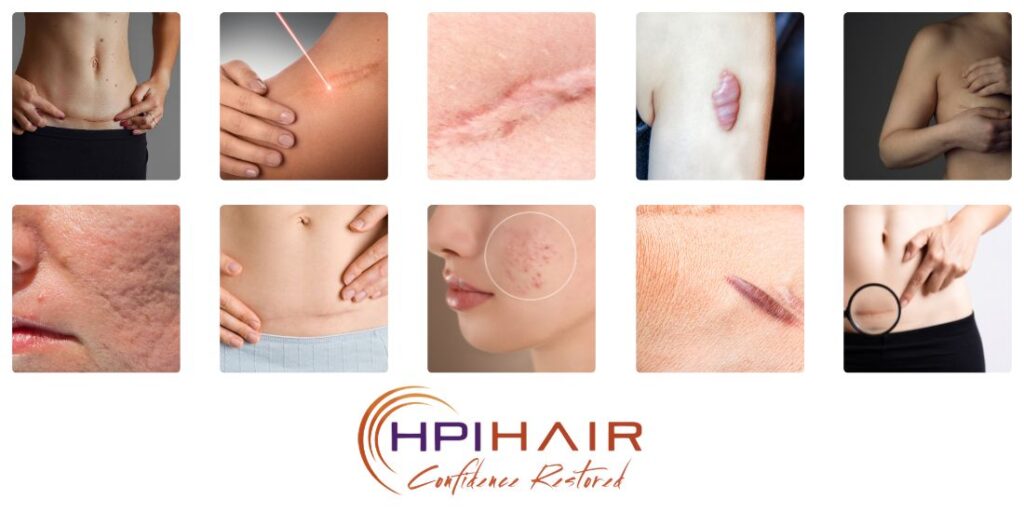Get to the root cause of your hair loss. Call 615-662-8722 today!
Non-Surgical Scar Revision
Scars are a natural part of healing after injury or surgery. However, they can sometimes be unattractive, red, protruding, itchy, painful, tight, or thick, limiting your movement and affecting your appearance and confidence.
At HPI Scar Revision, we understand the impact visible scars can have on your life. Our advanced scar revision treatments improve the appearance of your scars, making them less noticeable, and soften the surrounding skin for enhanced comfort and flexibility.
Our expert team provides personalized care tailored to your unique needs, offering cutting-edge treatment options to help you achieve smoother, more attractive skin.
Don’t let scars hold you back any longer. Contact us today to schedule a consultation and learn how our scar revision treatments can help you. Call us now or complete the form to book your appointment and start your journey toward improved skin and renewed confidence.

Experience the future of scar revision with Exosome Therapy — A revolutionary treatment that combines advanced microneedling techniques with cutting-edge regenerative science. During this innovative procedure, smart growth factors and exosomes are applied to your skin, enhancing its natural healing abilities and rejuvenating damaged tissue.
Benefits of Exosome Therapy:
The type, location, and cause of your scar are important factors in determining the most effective treatment. Common types of scars include:
Anyone with an unwanted scar may consider scar revision. Common cases we see at The HPI Scar Revision Clinic:
At HPI Scar Revision, we are committed to helping you achieve the best possible outcomes for your scar revision needs. Our board-certified clinicians will provide a combination of treatments designed to treat your specific type of scar effectively. While it is not possible to completely erase a scar, our treatments can significantly improve its appearance, reduce pain, and enhance your range of motion.
Discover how our comprehensive, affordable treatment plans can provide relief for severe scarring. Contact us today to schedule your assessment and take the first step toward smoother, healthier skin.
By submitting this form and signing up for texts, you consent to receive marketing text messages (e.g. promos, cart reminders) from HPIHair Partners at the number provided, including messages sent by autodialer. Consent is not a condition of purchase. Msg & data rates may apply. Msg frequency varies. Unsubscribe at any time by replying STOP or clicking the unsubscribe link (where available). Privacy Policy & Terms.
We are excited to meet you and will be in touch very soon.
If you are in a rush, Call our office now to schedule +1 615-662-8722